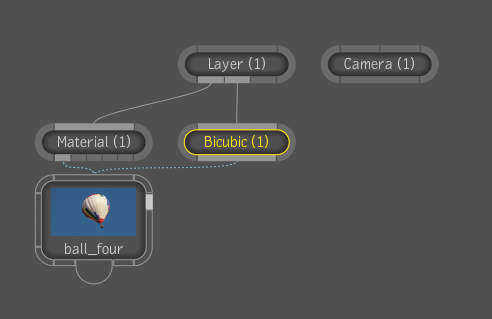Camera
mapping lets you add depth and perspective to a matte painting or
rendered image by allowing it to be projected onto geometry from
the point of view of the camera. In this way, you can add the illusion
of 3D movement to a 2D scene. This facilitates the creation of virtual
set extensions, and is also used as part of the process of converting
2D material to stereoscopic imagery.
Using the Camera Mapping
tool, which you can place between the geometry generator and the
Layer node, you can generate UV coordinates. UV coordinates are
2D coordinates that you can apply to an object; they are generated
by the camera connected to the Camera Mapping tool. UV coordinates
are affected by the camera's parameters, such as the field of view,
distance, and so on.
To use the Camera Mapping tool:
- Create a new composition.
- From the Tools tab, select Reaction and
drag it to the Schematic view
- Select a layer type from the Layer type
menu and click Create to add a new layer.
- Open the File browser and drag the image
you want projected into Schematic and attach it to the new layer
you created.
- Display the Group Schematic by double-clicking
the Reaction node or right-clicking the Reaction node and selecting
Edit Group.
- Temporarily disconnect the layer type
(bicubic in this case) node from the sub-graph.
- From the Tools tab, select Camera Mapping
from the Reaction folder and drag it to the Group Schematic.
- Connect the Layer Geometry output to
the Camera Mapping input.
- Connect the Camera Mapping Geometry output
to the bicubic node.
- From the reaction folder, drag a second
camera to the sub graph and connect its camera output to the Camera
Mapping node's Camera output.
- Adjust the Camera's Film Back, Position,
Rotation and Pivot parameters.




